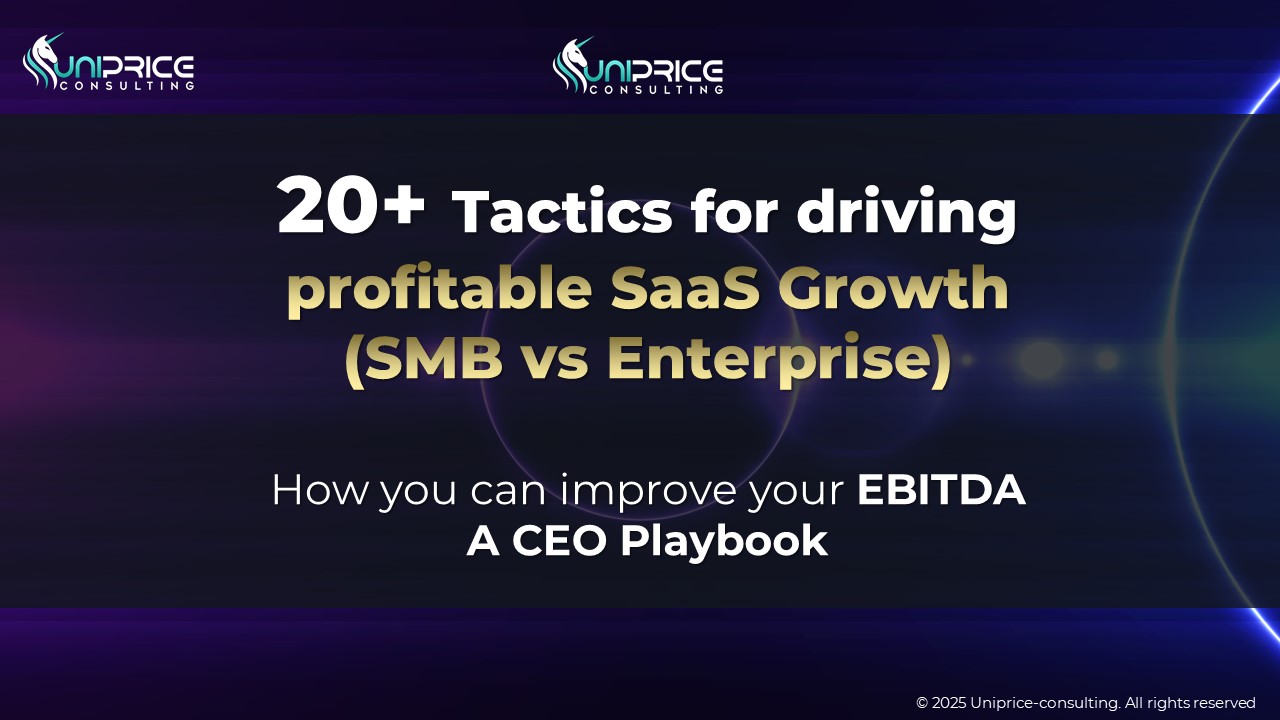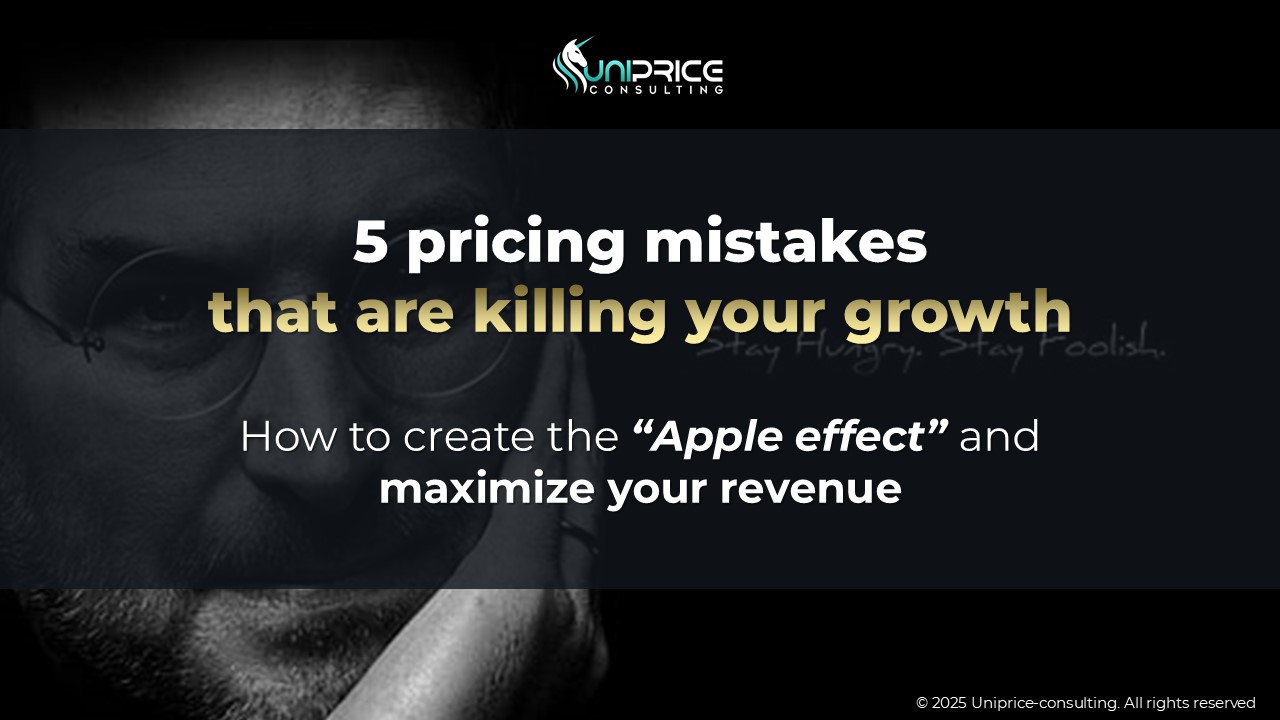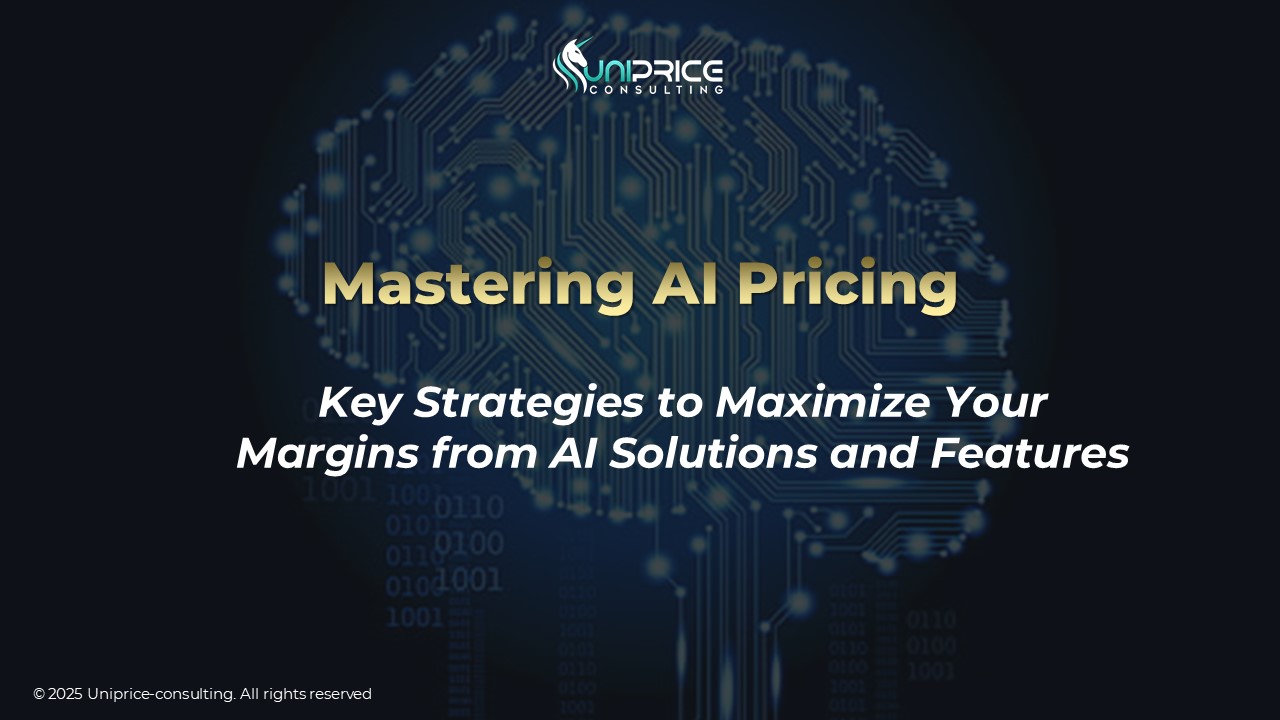In the SaaS world, the shift from “growth at all costs” to “profitable growth” is now a must. Businesses must balance strategic investments and cost controls to maintain a healthy Rule of 40 (the sum of revenue growth rate plus EBITDA or free cash flow margin ideally above 40). Below are 20+ concrete tactics, broken down by SMB (small and medium-sized businesses) and Enterprise approaches, to help you boost gross margin, streamline your organization, refine your pricing, and sustain healthy growth.
I. Differentiate Your Strategies for SMB vs. Enterprise
- Sales Cycle & GTM (Go-To-Market)
- SMB: Sales cycles typically last a few weeks to a month. An inside sales or self-service approach (where buyers can sign up and purchase on their own) helps keep your acquisition costs low and speed up conversion.
- Enterprise: Longer cycles can stretch to several months or over a year. A dedicated sales team (including Account Executives and Sales Engineers) is essential for managing proofs of concept, RFPs (Requests for Proposals), and more complex buying processes.
- Retention & Expansion
- SMB: Offer automated upsell opportunities (e.g., more storage space, additional modules) to quickly increase customer lifetime value without substantially raising costs.
- Enterprise: Position yourself as a partner. Assign dedicated Customer Success Managers (CSMs) specialized by vertical (industry) or region. This deeper engagement typically secures renewals in the yearly (or even multi-year) renewal cycle.
II. Maximize Gross Margin
- FinOps (Cloud Optimization)
- SMB: Keep a close eye on resource usage (e.g., shutting down unused test environments). Use basic FinOps tools to identify idle services and eliminate overprovisioning.
- Enterprise: Negotiate annual or multi-year contracts with major cloud providers for significant discounts. Establish a dedicated FinOps team (or partner with an external expert) to optimize your provisioning and architecture (for instance, limiting data transfer fees across different cloud regions).
- Automated Onboarding
- SMB: Create a plug-and-play experience (using setup wizards, prebuilt templates, concise tutorials) to minimize the need for in-house Professional Services.
- Enterprise: Package and charge for implementation. You can also partner with systems integrators so they handle deployments for large customers. This helps preserve your margins and still delivers tailored onboarding for high-value accounts.
- Support & Self-Service
- SMB: Leverage self-service tools (chatbots, video FAQs, step-by-step articles) to handle the bulk of common questions, freeing your team for complex issues.
- Enterprise: Offer multi-tier support (e.g., standard business hours vs. premium 24/7). Large accounts often accept (and expect) higher fees for top-tier service levels (strict SLAs, or Service Level Agreements).
III. Enhance Sales & Marketing Efficiency
- Monitor CAC Payback (Time to Recover Acquisition Cost)
- SMB: Aim for a payback of 6 to 12 months. Track performance for each channel (SEO, paid ads, partnerships) and reallocate budget to the most efficient sources.
- Enterprise: A 12-18 month payback can be acceptable, given the size of deals. However, avoid letting any rep underperform for more than two consecutive quarters before reassigning or restructuring.
- Focus on Lead Qualification
- SMB: Implement lead scoring (tracking site behavior, email engagement) to focus your sales team on the most promising leads. Don’t let them waste time on unqualified prospects.
- Enterprise: Deploy an Account-Based Marketing (ABM) approach. Zero in on strategic accounts, customize your messaging (tailored emails, specialized webinars), and invest in a deeper sales effort for those high-potential leads.
- Product-Led Growth (PLG)
- SMB: Provide a freemium or trial version with limited features to encourage a rapid upgrade path. Your marketing team should amplify word-of-mouth referral and viral loops.
- Enterprise: Use PLG as an entry point—one department may adopt your tool on a small scale, then you can expand across the entire organization. Support these pilot teams with an Enterprise CSM to close a larger, company-wide deal.
- Seller vs. Support Staff Ratio
- SMB: Often dominated by inside sales, you can’t afford a large, non-quota-carrying support staff (e.g., Sales Ops, Enablement). Keep it lean for maximum profitability.
- Enterprise: Maintain at most a 1:1 ratio of quota-carrying reps to support staff. Higher ratios can quickly balloon your Sales & Marketing costs with limited return on efficiency.
IV. Streamline R&D Without Sacrificing Innovation
- Strict Roadmap Prioritization
- SMB: Focus on a minimal but impactful feature set. Avoid spreading resources too thin with highly specific custom requests unless you plan to shift to mid-market or Enterprise.
- Enterprise: Set up a product committee (Product + Sales + Customer Success) to rank features by ROI for customers. Big accounts may request custom features, but don’t let these derail your overarching product vision.
- Implement Productivity Metrics
- SMB: Daily standups and code reviews typically suffice. Emphasize speed, quality, and a simple feedback loop.
- Enterprise: Adopt DevOps monitoring tools (like DORA metrics) or specialized platforms (e.g., LinearB, Allstacks) to spot bottlenecks. Track code review times, build duration, and other indicators to identify where your processes slow down.
- Cultivate Efficiency & Manage Team Size Wisely
- SMB: Before hiring more developers, ensure each current team member is engaged on top priorities. Smaller, highly focused teams usually build faster.
- Enterprise: In a large org, target 5–8 direct reports per manager to avoid management overhead. Evaluate each project’s ROI, not just its budget.
V. Master G&A (General & Administrative) Expenses
- Reduce Office Footprint
- SMB: Adopt a hybrid or fully remote structure if it aligns with your culture. Offices become an occasional meetup space rather than a daily cost sink.
- Enterprise: Sublease or relinquish entire floors when onsite headcount falls. A CFO’s audit of office usage can reveal major savings opportunities.
- Centralize & Renegotiate Vendor Deals
- SMB: Consolidate all your SaaS tools into a single list. Remove duplicates (e.g., two different CRMs in different departments). Negotiate bundles (multiple licenses in a package for better rates).
- Enterprise: Start with top spend categories (ERP, big data, etc.). Even a modest 10% discount on a multi-million contract yields far greater impact than optimizing dozens of smaller deals.
- Automate Back-Office Operations
- SMB: Use a single platform (for billing, accounting, HR) to reduce training and maintenance overhead.
- Enterprise: Invest in RPA (Robotic Process Automation—tools that automate repetitive tasks) to decrease manual workloads in finance, IT, and HR teams.
- Optimize Working Capital
- SMB: Encourage quarterly or annual billing to improve your cash flow, even if it means offering a small discount.
- Enterprise: Strive for upfront annual payments at contract signing. In parallel, negotiate longer payment terms with your own vendors, thus improving net cash flow.
VI. Smart Organizational & Management Practices
- Temporary Hiring Freeze
- SMB: Pause hiring for 2–3 months to assess the real impact on productivity. You may discover existing teams can handle more than expected.
- Enterprise: If you freeze hiring, shift focus to internal mobility and performance. Require managers to justify each backfill (replacing a departed employee) in writing.
- Span of Control & Simplifying Management Layers
- SMB: Each manager should supervise at least 3–5 individuals. Fewer than that, and bureaucracy grows while productivity stalls.
- Enterprise: Watch for managers with only 1 or 2 direct reports. Merge teams to reduce excess managerial layers.
- Zero-Based Budgeting
- SMB: Each department starts from a “blank slate,” forcing them to justify all expenses rather than rolling over last year’s budget.
- Enterprise: Apply this method at the BU (business unit) level. Vice Presidents need to detail each budget line item, explaining its direct impact on growth or customer satisfaction.
- Targeted Offshoring / Nearshoring
- SMB: Begin with non-critical tasks (tier-1 support, data entry). Maintain a local manager in the outsourced region to preserve quality.
- Enterprise: Expand offshoring to certain R&D or back-office functions if you have solid communication and project management in place. Avoid quality or delivery speed erosion by implementing clear processes and frequent check-ins.
VII. Refine Pricing & Packaging
- Regular Price Updates
- SMB: Test incremental increases for new customers (3-5% yearly, for example). Offer temporary grandfathered pricing for existing ones.
- Enterprise: Justify price adjustments with new features or proof of higher ROI. Build in annual indexation clauses (e.g., linked to inflation) in multi-year contracts.
- Volume- or Usage-Based Models
- SMB: Offer tiered plans (Basic, Pro, Premium) where usage levels (like number of seats or data storage) define the price bracket. As customers scale, they pay more.
- Enterprise: Adopt a “value-based pricing” approach tied to measurable business impact (e.g., number of transactions, throughput). Enterprise clients usually pay more if the perceived value clearly outweighs the cost.
- Default Annual Billing
- SMB: Provide a discount (like 10% off) for annual upfront payment while keeping monthly billing at a higher rate. This strengthens your cash reserves.
- Enterprise: Push for multi-year deals with upfront payment at signing. It dramatically improves revenue predictability and cash flow management.
VIII. Conclusion
Pursuing profitable growth isn’t just about cutting costs. It’s about optimizing every function (R&D, Sales, Marketing, G&A) to secure healthy margins while remaining attractive to new clients. The tactics above create a flexible SaaS ecosystem that can handle quick, high-volume SMB sales as well as the complex enterprise deal cycle. Ultimately, the goal is to maintain the delicate balance between growth and profitability. CEOs who successfully navigate this shift will enjoy higher valuations and secure a sustainable business model that can withstand market shifts.
Lyas Driad
Ceo








